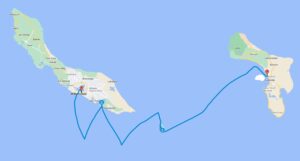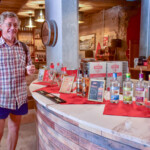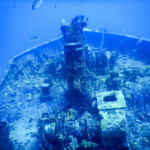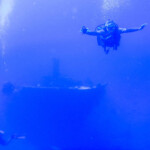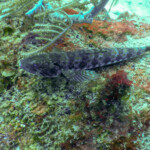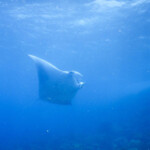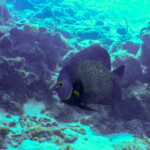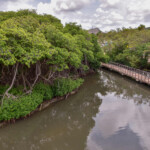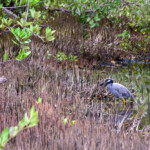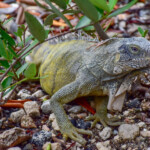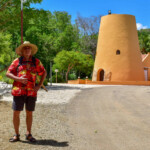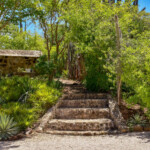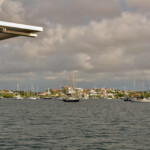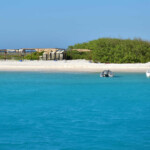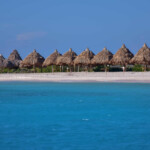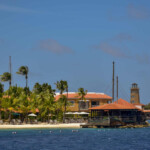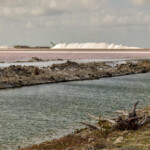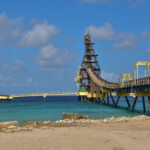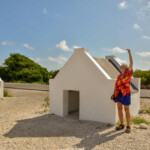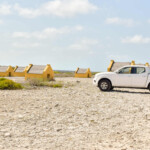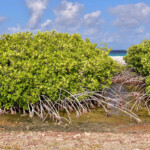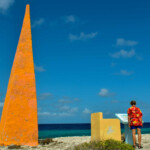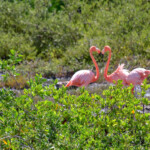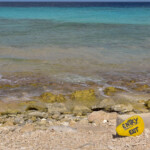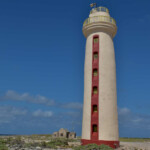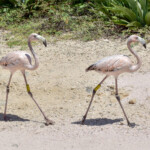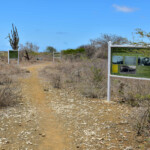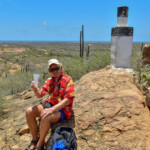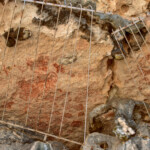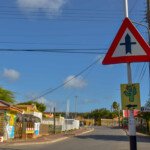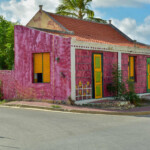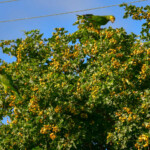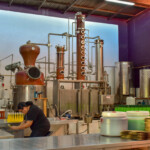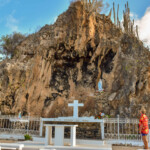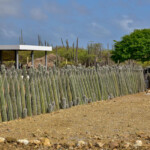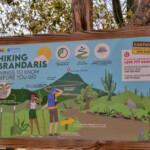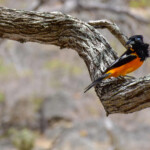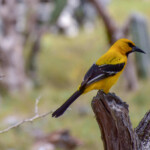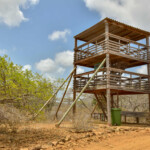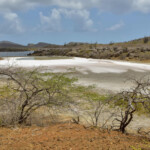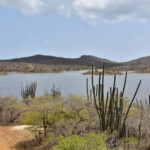Route: Willemstad (Curacao)-Harbour Village (Bonaire)
Date: 01-12.08.2024
Miles/hours: 72nm/20h
Curacao
Diving
There are many beautiful diving sites in Curacao. In diving shops you can rent only equipment (about $15 per item, or $50 for a set), or order a dive with a guide (about $100 per person for 2 dives without equipment). We chose a guided dive.
Most dives are from the shore. We dive on the first dive at the wreck of the Superior Producer ship, which sank in 1977 – it is a large cargo, stands straight on the bottom at a depth of about 20m, you can swim inside. The second dive on a double reef. The guide is with a friend and they leave one car at the start and the other at the end of the dive. We sail with the current along beautiful reefs, and at the end of the dive a huge manta ray swims by us.
Bus transport
There are about 10 bus lines running around the island – the ticket costs $1.50 per person. The timetable only gives departure times from the starting station (https://autobusbedrijf.com/en/route-information/route-hours-and-map), but if you have internet, you can check what time the bus should be at a given stop: https://autobusbedrijf.com/en/route-information/busses-on-route.
The buses are not air-conditioned, but with the windows open it is quite good.
Curaçao Rif Mangrove Park
A very nice park with paths among mangroves with information boards, viewpoints and lots of birds. The park is located in the Otrabanda district of Willemstad. Admission is $15 per person. You can also rent kayaks or take a guided tour (more expensive).
Floating Market
A floating market, mainly fruit. The stalls of vendors are mainly from Venezuela – they bring their goods by boat. They have mainly fruit, although you can also find some vegetables. It is worth going at the end of the day (around 4 p.m.), then some vendors are already closing and you can haggle a better price or more for the same price. We got about $2.50 per kilogram of fruit (mango, pineapples, bananas, etc.), and on the last day we bought 5 kg of mango for $11 – Tomek became a fan of mango
Curacao exit check
In the same order as when entering – first Immigration and then Customs. All crew members must go to Immigration. There is a gate to the port, through which it is closer, but unfortunately it is only open until 4 p.m. To check in, you need an entry document and passports. Customs needs a number from Sailclear. Everything goes smoothly, unless the customs officer forgets the password to the application or the scanner hangs up.
Spanish Water
Anchorage south of Willemstad. It has designated anchoring zones. You need to get permission from the port captain’s office (open weekdays until 5 p.m.). A nice and safe bay, very crowded, but with apparently a very well-developed “social” – people on boats visit each other, there are some themed events on the shore every day, and a bus goes to the shop twice a week.
Klain Curacao
A small island about 15 NM from Curacao – consists of nice sandy beaches to the west, a few wrecks to the east and a few bars. During the day, boats with people come here to the beach (around 9 a.m. and leave around 3:30 p.m.). The water is nice blue and has white sand. There are also a few divers, some on their own boats. Similar to Spanish Water, a permit is also needed here. Yachts are at anchor – there are a few buoys, but they are reserved for commercial yachts. The anchorage is well protected from the waves, but you have to drop the anchor close to the shore opposite the beach, because that’s the only place where it holds well (there is sand, and in other places stones)
Bonaire
An island famous for its beautiful diving spots, for a permit to stay in the marine national park you have to pay 40 USD per person (form on the website https://stinapa.bonairenaturefee.org/) this also allows entry to Washington Slagbaai National Park, valid for the current year. Additionally, upon entry you need to buy the Visitors Entry Tax – it’s 75 USD per person – you have to fill out a form on the website https://tourismtax.bonairegov.com/.
Marina Harbour Village
The marina is on the premises of a holiday resort. You have to book in advance. After arriving, you sail to the gas station where the marina office is. For stays over 7 days, the fee is 1.1 USD per foot/day plus 6% tax and a fee for water and electricity according to the meters. After completing the formalities and paying, we can move to the right place. We get a card with various codes (to the gate to the jetty, the gate to the resort and toilets with showers). The marina has internet, in the office you have to generate a code that works for a specific number of days. The internet is of rather poor quality and often disconnects, but Starlink does not work here and local phone cards are not the cheapest. We learned that the local government did not come to an agreement with Starlink, so Starlink turned off the service.
The marina is nice, full of greenery, there is even a small swimming pool, places to relax, quite decent showers.
Check in
It takes about 15 minutes to check in from the marina min on foot – all crew members should show up with passports. Sailclear is working – Bonaire wasn’t on the list, so the Customs Officer filled out the form for me – nice. Immigration also filled out the form in the system, but they printed it out and just asked me to sign.
Car rental
We took a car from AB Car Rental. They offer pick-up and drop-off from anywhere in the Kradendjik area for free. Car rental alone costs $35 per day, but after adding insurance and taxes it came to $61 per day. And be careful, you can’t lock your car or leave valuables inside. Apparently they often break windows and if you leave your car locked and they break your window, even if you have full insurance you will still pay for the window.
Solar Salt Works
A huge factory area where salt is produced from sea water, first windmills pump water from the sea into shallow pools, there it is evaporated (naturally by the sun) and pumped into increasingly shallow pools. These tanks are easy to distinguish, because the water changes color from sapphire green at the beginning, to pink at the end, before complete evaporation. Then it is collected by machines and piled up into piles of salt, and these are loaded onto ships by conveyor belt. In the past, there were 4 pyramids along the shore – blue, white, red and orange – to these areas lifeboats from ships would sail and load salt of different thicknesses.
Slave cottages
Tiny cottages where slaves working on recovering salt from sea water slept and rested. To the south, by the “desalination plant”, there are two such clusters – one is painted white and the other yellow. They are really small and even I had to bend down to get inside. On one side they have an entrance, and on the other a “window” or an opening in the other wall, a gable roof, and probably 3 meters long.
Peklemeer and flamingos
Along the road you can see whole groups of flamingos walking in the salt lakes. Entry is prohibited everywhere, but some flamingos come really close.
Willemstoren Lighthouse
An old lighthouse, designed to warn ships of dangerous reefs. Nicely restored, unfortunately you can’t go inside.
Mangrove Info Center
A center for kayaking trips around mangroves. Cost around $50 for a 2-hour guided tour and $30 for an hour. During the tour you snorkel (your own mask and snorkel recommended). In addition, you have to buy the Bonaire Nature Fee ($40). It is also worth taking a waterproof bag. There is also a foundation in the centre that takes care of young flamingos (they only turn pink after 2-3 years, and are grey at first) and other birds. It feeds them and treats them if necessary.
Tanaka Maraka Museum
Open-air museum, the area of the former US military base from World War II. Large area, but all that remains of the base are concrete foundations of buildings and bases for devices. There is a marked route
Bara di Karta Hill
A nice hill – about 15 minutes walk from the “parking lot”, i.e. the place where you can leave your car. From the top there is a nice view of almost the entire island.
Marca Caves with Indian inscriptions
A group of three caves located about 200m from each other, where there are signs painted by prehistoric Indians (around 500 BC). According to archaeologists, the inscriptions are written dates of important events.
Boca Omina
A beautiful bay with washed-out rocks on the sides and blue water.
Cudshy Distillery
A distillery and producer of various alcohols, starting with liqueurs (the flagship cactus liqueur – from Bonaire) they make 6 types of liqueurs, each from specific plants found on one of the islands of the Netherlands Antilles, i.e. Aruba, Bonaire, Curacao, Sint Eustatius and Saba, and additionally orange from oranges. In addition, they produce strong alcohols: vodka, whiskey, gin and 3 types of rum. You can try all of this for free at their bar. You can also buy drinks from them, or a whole bottle. The most expensive rum costs over $130. We decide on cactus liqueur for $32.
Rincon
A beautiful town in the north of the island full of traditional houses, nicely painted. The oldest town on the island. The original Spanish built this settlement in the early 16th century to stay out of sight of pirates. Rincon was founded by them in 1527.
Goto Salt Lake
Gotomeer is a saltwater lagoon near the northern tip of the island where flamingos roam. Bonaire is one of the few places in the world where pink flamingos nest. These shy, skinny creatures, affectionately called “pink clouds,” are wonderful birds to watch. The best time to see them is from January to June, when they are nursing their gray-plumed young. For the best views, take the paved access road along the lagoon through the cactus jungle to the parking lot and observation point on a rise overlooking the lagoon and Washington Slagbaai National Park.
Washington Slagbaai National Park
Entry to the park requires the purchase of the Bonaire Nature Fee of $40 per person. The fee is personal and you have to show a photo ID when entering the park. There are two routes through the park – a longer and a shorter one. We are most interested in climbing the highest mountain on the island (241m above sea level), so we choose the shorter route. You can start climbing the mountain no later than 12 noon, no one is watching, but maybe there are cameras somewhere. You need good full shoes with stiff soles to enter. The ascent to the top takes about 50 minutes, and the descent about 45 minutes. You climb to the top along a ridge on stones. The trail is marked with yellow paint on the stones. There are many lizards and birds on the top. While we were sitting there, they came closer and closer. At the top, we ate sandwiches and drank coffee from a bottle (but poured into cups). After descending, we returned to the road and visited all the marked points – places for snorkeling (diving is prohibited in the park), nice viewpoints and a birdwatching tower. We left the park at around 3:30 p.m. We tried to eat lunch on the way, but everything was closed, so we went back to the yacht and ate lunch on the yacht.
Kralendijk
The capital of the island, not a very large town – in the center a few nice low colorful houses, a shopping arcade, lots of shops and cafes.
Kralendijk is a distortion of the word “coral dike” referring to the “coral stone causeway” or “coral bottom” on which the city was built. The name Kralendijk appeared around 1835. The residents of Bonaire prefer to call it “Playa”, which means beach in Papiamento, when talking about their capital. Until 1868 Bonaire was government property and settlement on the coral island was prohibited. Since 1868, free settlement was allowed on Bonaire, and Kralendijk grew into the city it is today.



